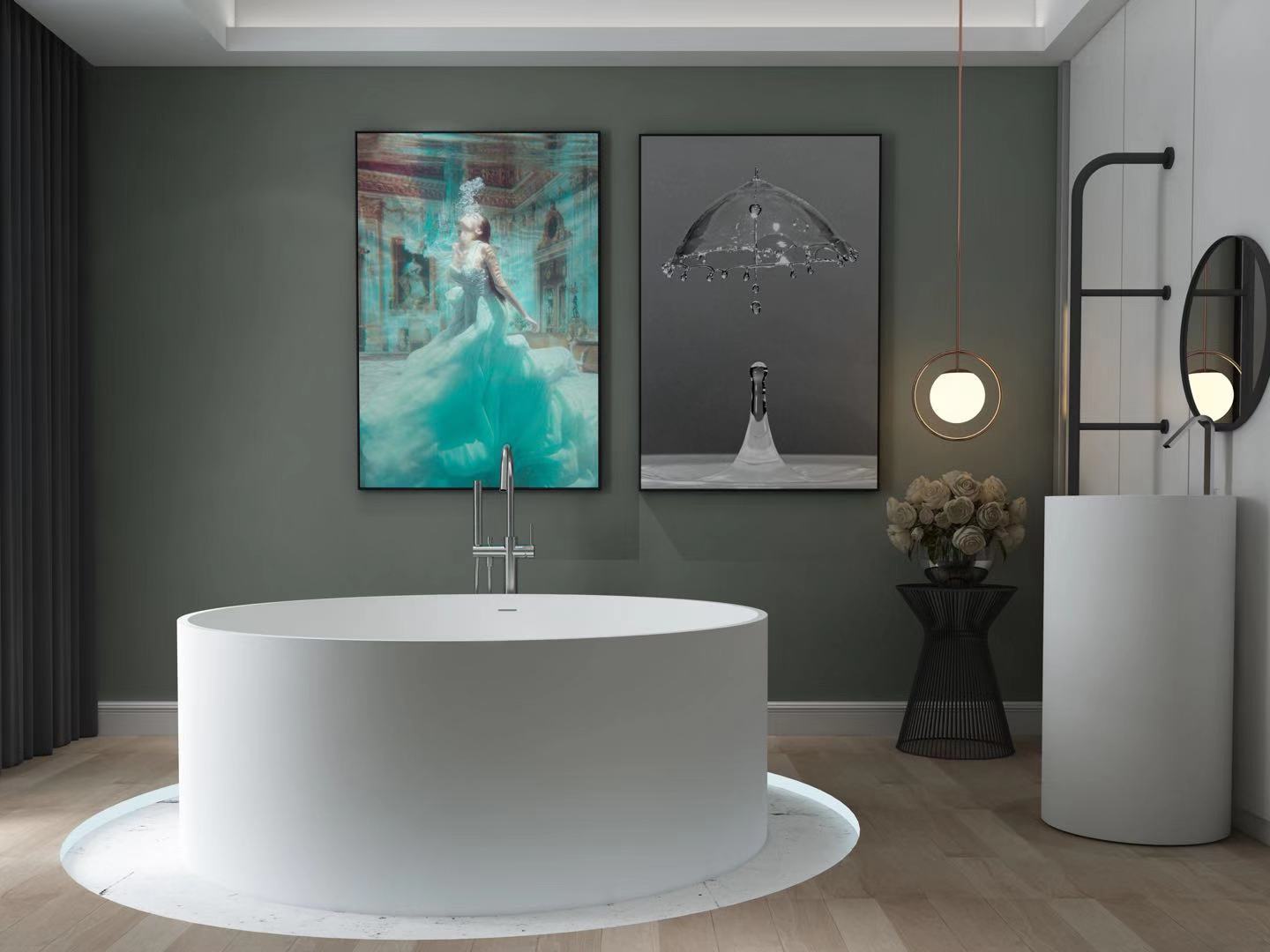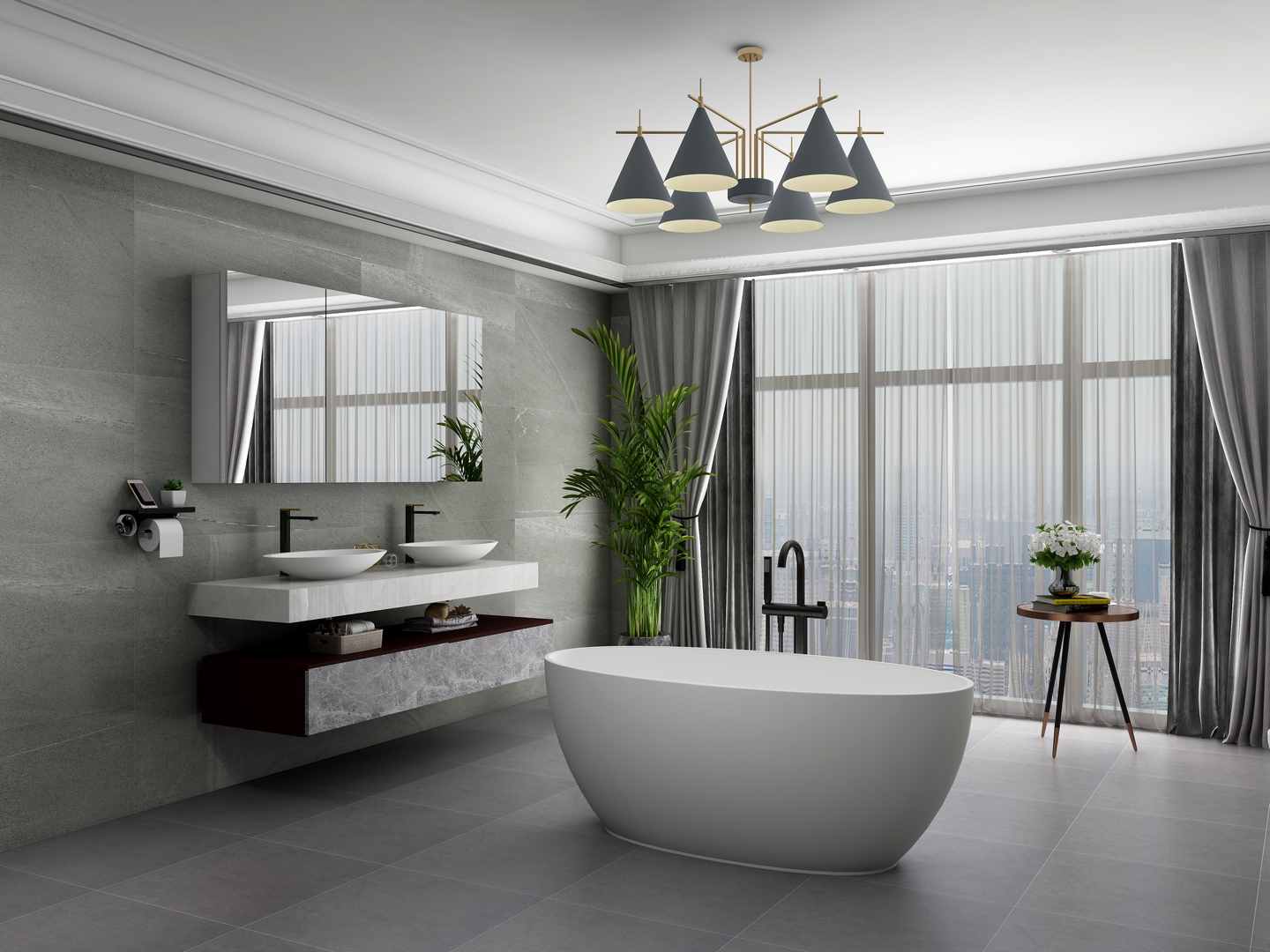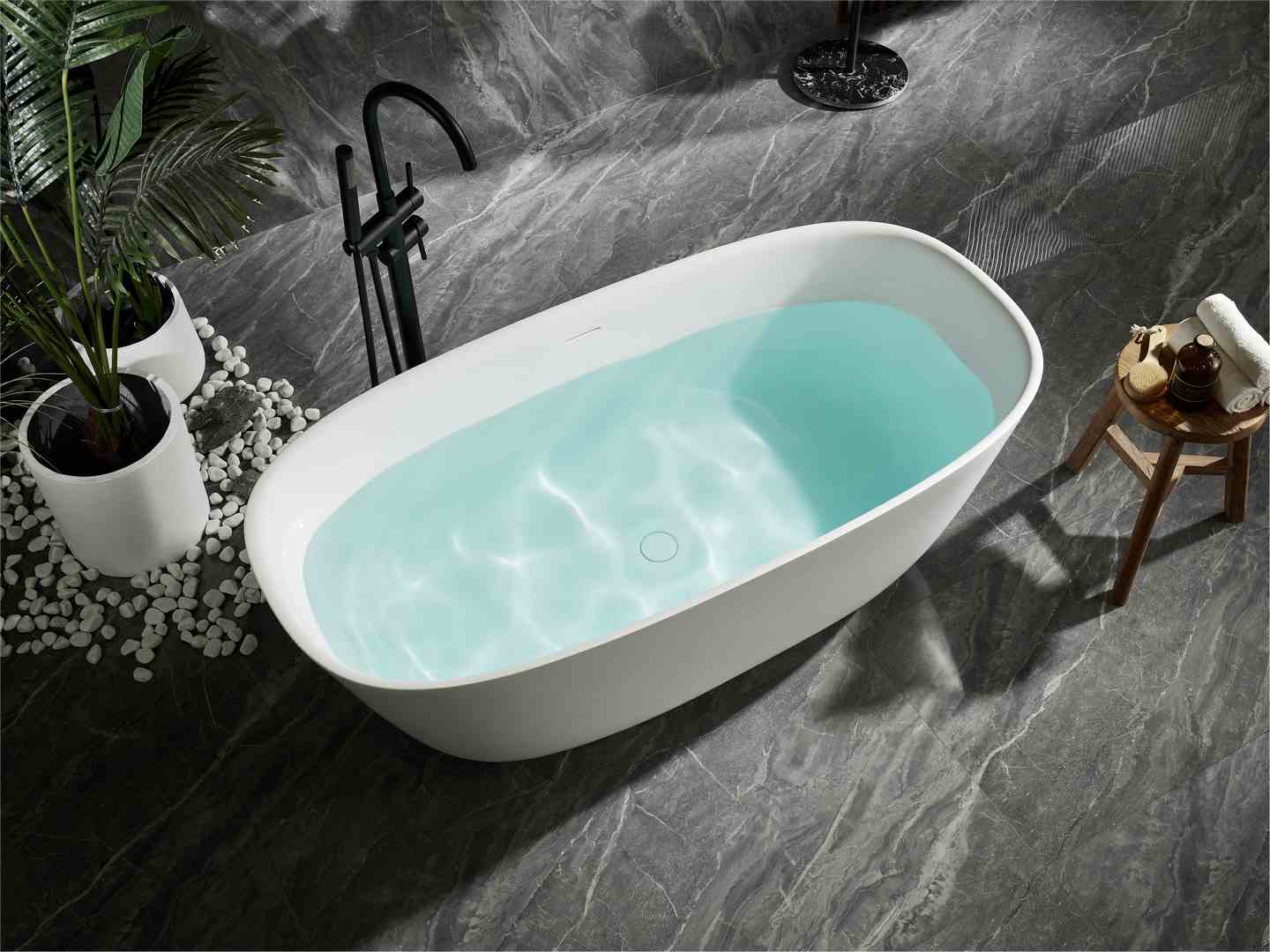The Top 5 Solid Surface Tub Materials: Everything You Need to Know
Introduction
Are you curious about solid surface tub materials?
You're not alone. Many people have doubts about these materials, including their origins, durability, and applications.
These puzzling points often arise because of the diverse range of materials available and the technical jargon used by solid surface bathtub manufacturers.
By solving these five common doubts, we'll help you make informed decisions about your next bathroom design with bathtub.
Whether you're comparing solid surface vs acrylic tubs or exploring options from Chinese modern freestanding bathtub companies, understanding these materials can significantly impact your choices.
Let's dive into the details and uncover the essential characteristics of the top five solid surface tub materials.

a) What is solid surface tub material?
Solid surface tub material is a man-made composite typically made from natural minerals and acrylic or polyester resins.
This blend creates a durable and moldable material ideal for bathtubs, countertops, sinks, and other surfaces in residential and commercial environments.
Key components often include aluminum oxide trihydrate (ATH), which is bound together by resins to provide exceptional durability and moldability.
One of the standout features of solid surface materials is their ability to be seamlessly molded and joined, resulting in a smooth, continuous appearance.
The non-porous nature of these surfaces resists stains, mold, and bacteria, ensuring a hygienic environment.
Additionally, solid surface materials can withstand significant impact and high-intensity use without chipping or cracking.
Minor surface damages like scratches, chips, and dents can often be repaired by simple sanding and polishing.
This material is highly flexible in design, allowing it to be engineered into various shapes and styles.
Cleaning is straightforward with conventional household cleaners, and its non-porous surface makes it resistant to mold and bacterial growth.
Moreover, some solid surfaces are made from recyclable materials, making them a more environmentally friendly choice compared to other synthetic options.
Solid surface bathtub manufacturers often highlight these benefits, appealing to consumers looking for durability, hygiene, and eco-friendliness in their bathroom design with bathtubs.

b) What is the surface of a bathtub made of?
Bathtub surfaces can be crafted from various materials, each offering distinct characteristics, advantages, and drawbacks.
Here are the most common materials used for bathtub surfaces:
Acrylic bathtubs are made from a thermoplastic material known for its lightweight and versatile properties.
This non-porous material is easy to clean, offers good insulation, and comes in numerous shapes and sizes.
However, it's not as durable as cast iron or steel, making it more susceptible to scratches and wear over time.
These bathtubs feature a steel core coated with a layer of enamel (porcelain).
They are durable, retain heat well, and are relatively inexpensive.
However, enameled steel tubs are heavier than acrylic options and can chip and rust if the enamel surface is damaged.
They also tend to be cold to the touch before filling.
Created by pouring molten iron into a mold and applying an enamel coating, cast iron bathtubs are extremely durable and offer excellent heat retention.
They have a classic appearance that many homeowners love.
The main drawbacks are their weight, high cost, and the difficulty of installation due to their heaviness.
These bathtubs are made from layers of fiberglass reinforced with polyester resin.
They are lightweight, affordable, and easy to install. However, fiberglass is less durable compared to other materials.
It can scratch and fade over time and is more prone to cracking.
Tile:
A tiled bathtub surface consists of a substrate covered with tiles.
These can be custom-designed and offer good insulation.
However, they require regular grout maintenance, can be slippery, and are prone to cracking if not properly maintained.
When comparing solid surface vs acrylic tubs or other materials, solid surfaces often stand out due to their seamless appearance, durability, and hygienic properties.
For those interested in exploring more options, reviewing a bathtub manufacturers list can provide insights into the diverse offerings available from various bathtub manufacturing plants.

c) What is the life expectancy of a solid surface?
The life expectancy of a solid surface material can range from 10 to 30 years or more, largely depending on the quality of the material, usage conditions, maintenance practices, and the installation environment.
Opting for well-known brands and high-quality solid surface products generally ensures better durability and a longer lifespan.
Solid surface materials are composed of a specific formulation of minerals and resins, which affects their abrasion resistance. In high-traffic areas, such as commercial establishments or busy households, these surfaces might wear out faster.
Regular maintenance, including keeping the surface clean and free of debris, can prevent scratches and stains, prolonging the material's lifespan.
Additionally, maintaining a stable indoor environment free from extreme fluctuations in humidity and temperature will help preserve the integrity of solid surface materials.
In terms of durability, solid surface tubs stand up well against everyday use, making them a practical choice for bathroom design with bathtubs.
Their ability to be easily repaired by sanding and polishing minor damages also contributes to their long-term usability.
When comparing options like solid surface vs acrylic tubs, solid surfaces often prove more resilient and easier to maintain, thereby extending their functional life.
Many bathtub manufacturers list solid surface tubs as a top choice for those seeking longevity and consistent performance in their bathroom fixtures.

d) What are solid surface bathroom countertops made of?
Solid surface bathroom countertops are crafted from a blend of natural minerals and synthetic resins, typically acrylic or polyester resins.
The primary mineral used is aluminum oxide trihydrate (ATH), which is derived from bauxite.
This mineral component gives the material its strength and durability.
Aluminum Oxide Trihydrate (ATH):
This is the most commonly used mineral in solid surfaces, providing a sturdy base that contributes to the material's overall resilience.
These act as binders that hold the mineral components together, adding flexibility and allowing the material to be molded into various shapes.
The two main types of synthetic resins used are:
Known for their flexibility, acrylic resins are easy to mold and repair.
Countertops made from acrylic-based solid surfaces are usually more expensive but offer higher quality and greater durability.
They are also less prone to yellowing and provide a more consistent color throughout the material.
These resins are generally cheaper than acrylics and can provide vibrant, striking colors.
However, they are less durable and more challenging to repair if damaged.
Polyester-based solid surfaces might be more prone to brittleness and yellowing over time compared to their acrylic counterparts.
These components combine to create a non-porous, seamless surface that resists stains, mold, and bacteria, making solid surface countertops an excellent choice for maintaining a hygienic bathroom environment.
Additionally, the ease of repair and maintenance makes them a practical option for both residential and commercial bathroom designs.
When comparing solid surface bathroom countertops to other materials, their balance of durability, aesthetic appeal, and hygiene often makes them a preferred choice among modern homeowners and designers.

e) What scene conditions can solid surface tubs be adapted to?
Thanks to their versatility, durability, and customizability, solid surface tubs can be adapted to a variety of scene conditions:
- Residential Bathrooms: Perfect for master bathrooms, guest bathrooms, and small bathrooms, offering stylish and practical options for any home setting.
- Commercial Sites: Ideal for hotels and resorts, spas, and wellness centers. These tubs are easy to sanitize and resist mold and bacteria growth, making them excellent for healthcare facilities.
- High Humidity Environments: Suitable for tropical climates, indoor pools, and saunas. Their non-porous surface prevents moisture absorption, maintaining integrity in humid conditions.
- Custom Designs: Can be tailored for freestanding bathtubs, one-piece bathtubs and showers, and built-in storage, offering flexibility in design to meet specific aesthetic and functional requirements.
- High-Traffic Areas: Durable enough for public restrooms and student housing, standing up to frequent use without compromising on quality.
- Luxury Environments: Enhance high-end residences and boutique hotels with their seamless, elegant appearance and superior performance.
- Eco-Friendly Environments: Suitable for green buildings and LEED-certified projects due to their durability and potential for containing recycled content. These materials support sustainable practices while maintaining high quality.
- Outdoor Spaces: Adaptable for rooftop pools and outdoor bathrooms, providing durability and resistance to weather conditions.
Solid surface tubs, favored by many solid surface bathtub manufacturers and Chinese modern freestanding bathtub companies, are a versatile choice that fits various applications and design needs.
Their adaptability ensures they can meet the demands of different environments, from residential to commercial, luxurious to eco-friendly, making them a comprehensive solution in modern bathroom design with bathtubs.

Conclusion
This article delved into five essential aspects of solid surface tub materials: their composition, common surface materials for bathtubs, life expectancy, makeup of bathroom countertops, and adaptable scene conditions.
Among these, solid surface tubs are highly popular for their durability, seamless appearance, and hygienic properties, making them a favorite in both residential and commercial settings.
Acrylic-based solid surfaces tend to have a higher purchase rate due to their superior quality and repairability.
In contrast, polyester-based solid surfaces, though less durable, are favored for their vibrant colors and cost-effectiveness.
Less commonly seen but highly valued in eco-friendly and luxury environments are solid surfaces incorporating recycled content, supporting sustainable practices while offering high performance.
Solid surface materials continue to lead in modern bathroom design, thanks to their versatile applications and enduring benefits.
Welcome to know more detailed information about products in Cpingao:
